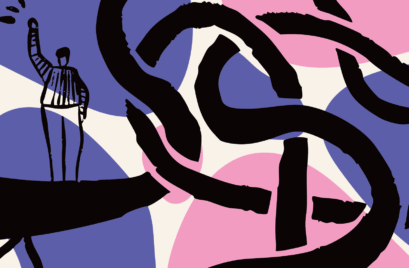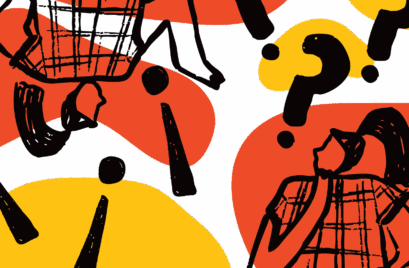
If someone asked you to “make time” for something at work, how would you react? I’m guessing you might feel a tightening in your chest, or your head may throb. Perhaps your thoughts fly to your backlog of tasks and the meetings on your plate. “Making time” would not be a welcome, or for some, even a feasible idea.
But here’s the complexity. Leadership is all about having enough time: to be strategic, to be solving complex problems , to coach, to counsel, to manage, lead and complete your action items, to stay across AI advancements and employ them for best use, to coach and mentor your team, to build relationships upstream, downstream and across, to create opportunities for others, and to do it with grace and understanding, good listening skills, compassion and emotional intelligence. The reality is that there may never be enough time to meet all those demands, and this can leave us constantly preoccupied and distracted.
The answer may not lie in finding more hours but in shifting how we inhabit the time we have. Presence—being fully attentive and intentional in the moment—is a skill and a choice leaders can cultivate to better navigate their complicated work life.
The Sands of our Time
However, we know from both lived experience and scientific research that being present is not easy. Humans are uniquely capable of learning from the past and planning for the future. It’s part of what has made us so successful as a species. The challenge (due to the way we are wired through evolution) is that we get stuck there, while the impact we have stems from the present moment.
Yet we’re often anywhere but in the present!
So, let’s turn to a familiar metaphor to paint this picture. Think of an hourglass as a temporal representation of our lives…
At the top is the future—what hasn’t yet happened.
At the bottom is the past—what’s already gone.
And in the narrow and ever-changing middle—is this moment where everything real occurs.
The hourglass is a great reminder that the question is not necessarily “how do I get more time?” It is: “How do I increase the quality of the moment I’m in?”
Replacing Scarcity with Abundance
When we focus on the past or the future, we are prone to pay attention to certain things over others. Our ancestors survived by looking out for threats through a focus on losses over gains, or scarcity over abundance. They weren’t necessarily collaborative or optimistic because they were listening for a rustle in the bushes, or an attack from behind. And it worked for them—back then.
But we’re no longer dodging predators on the savannah. We’re leading teams through quarterly strategy cycles, major technology transformations, and cultural shifts in systems that are constantly changing. And the truth is, our brains are brilliant—but in some ways they are also outdated. We evolved for survival, not for navigating ambiguity, complexity, and interdependence.
We are wired to detect what could go wrong, not what’s possible. Wired to protect, not necessarily to partner. Wired to retreat into scarcity, not lean into abundance. So, if you’ve been feeling reactive, cynical, or checked out—you’re not broken. You’re just human.
We call this a scarcity mindset. And when we’re in scarcity, our attention is replaying past failures, predicting future disasters, attempting to control what’s fundamentally uncertain.
So, if you constantly feel there’s “not enough time” or “not enough resources.” That’s normal. It’s ancient wiring doing its job. But what if the real shift isn’t in getting more, but in noticing where you are? Adaptive leadership calls on us to pay attention to those ancient reflexes, and to choose something different. And the only place that choice can happen is here—in the present moment—where change becomes possible.
Being present—fully, intentionally, in this moment—is one of the few things entirely in your control.
The Opportunity of Awareness
What we know about being present and in the abundant mindset is that we’re able to grow in our thinking, evolve our worldviews, and act in a more wise and conscious manner. We are also likely to be more socially resilient. And yet, we often listen to respond, jumping ahead to our own thoughts and cancelling out our ability to receive.
A good way to begin building our capacity for being present is by getting curious. Ask yourself:
- What am I reacting to?
- How is my evolutionary brain trying to keep me safe?
- What wisdom does it hold?
- Where might it be overstretching?
- What if this tension is information?
- What would awareness (not impulse) look like here?
Regulate, Relate, Reason
And when we find ourselves in those precious moments with another team member, there are ways we can set them up to be more fully present as well, by tapping into the brain’s processing hierarchy.
To effectively engage in higher-level thinking, Dr Bruce Perry’s (trauma-informed) approach suggests that we need to address the needs of the lower brain first through these three methods:
Regulate (create safety) – before engaging in conversation or problem-solving, help the person feel physically safe and calm
Relate (foster connection) – once the person is regulated, the next step is to build trust and connection by finding common ground
Reason (engage in constructive dialogue) – only after regulation and connection have been established can a person effectively think, learn, or problem-solve
Using this approach helps teams move beyond reactivity to intentional, collaborative problem solving.
Ultimately, the greatest challenge and opportunity we hear from the leaders that we work with is about managing time. However, we suggest it more about understanding and exercising presence. By recognising and consciously shifting away from ancient scarcity-driven reflexes towards an abundant mindset, leaders can transform tension into insight, react less and respond more, and create spaces where collaboration and growth flourish.
Presence is a choice made in each moment, the only truly controllable aspect amid uncertainty. Embracing this mindful approach equips leaders to navigate complexity with clarity, compassion, and impact. Time will keep slipping through the hourglass, but as it does, the quality of your presence can transform your leadership impact.









